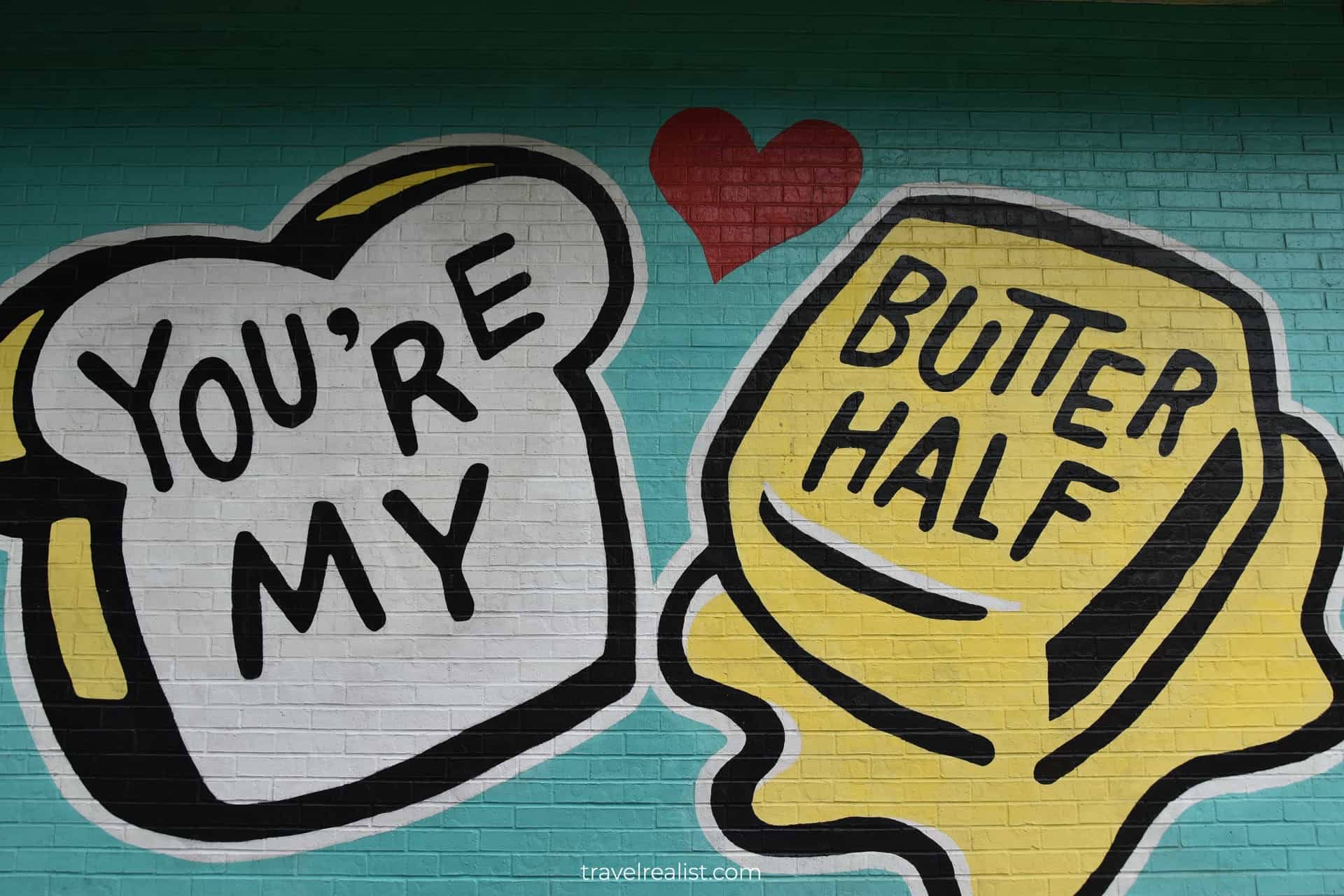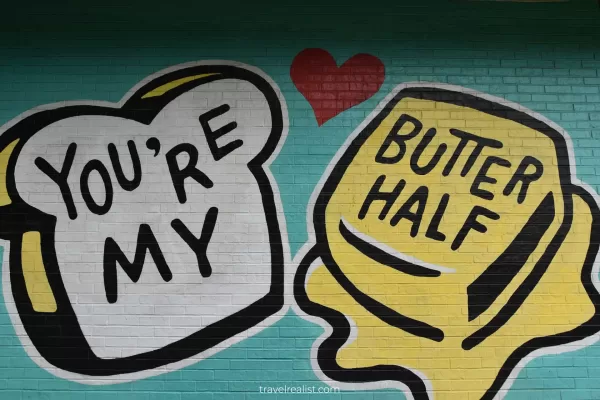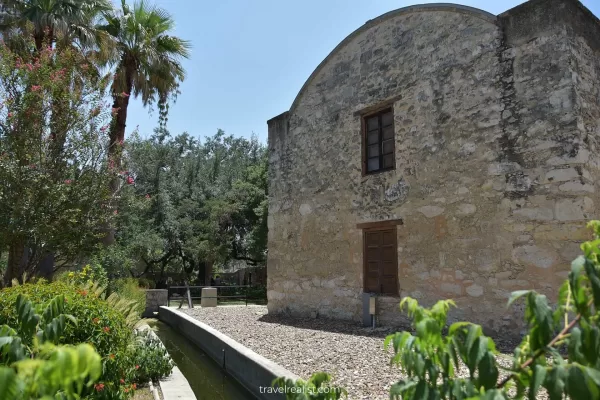Dublin: Walking Tour of The Historic City Center

Dublin, Ireland Guide
Use our realistic Dublin, Ireland Guide to plan your next trip to the historic capital of the Republic of Ireland.
The largest city in Ireland has historic buildings, beautiful bridges, large parks, and countless pubs.
This post includes affiliate links that will earn us commission if you make a purchase via these links.
Sights & Places of Interest
Our Dublin, Ireland Guide follows the path we took to explore the city. We started from the Grand Canal Dock and finished at St. Stephen’s Green. Depending on your pace, you could either visit all sights in one day or space them out across several days.
Grand Canal Dock
We found Grand Canal Dock to be a good starting point for exploration. Most cabs and express buses would bring you from the airport to the Docks in 30 minutes. The streets get narrower and traffic slower if you choose to drive further into the city center.
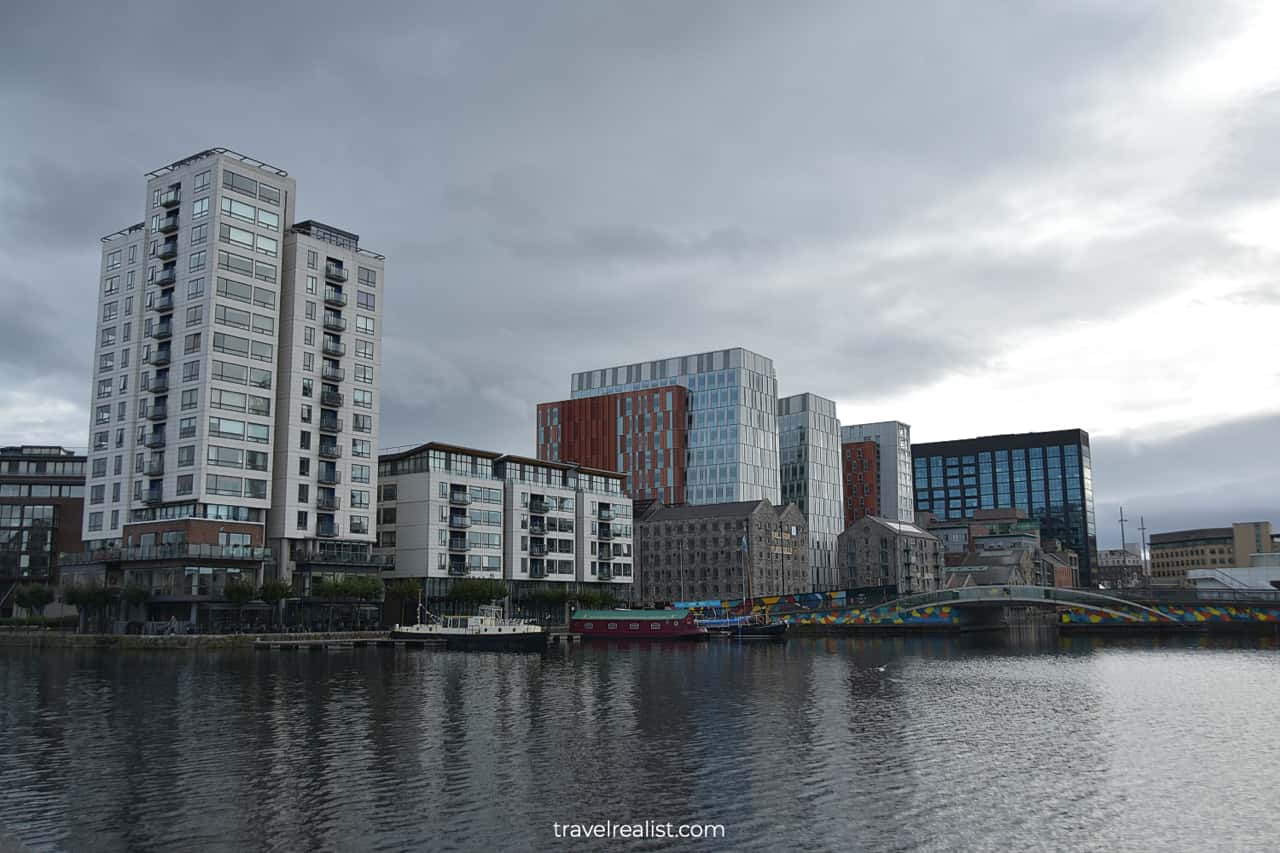
Poolbeg Stacks
Grand Canal Dock is not the most scenic area of the city. Nicknamed “The Silicon Docks”, this area is home to many global technology companies. Not surprisingly, most sights near the Docks date to the 20th and 21st century. These include the Bord Gáis Energy Theatre and the Poolbeg Stacks. The latter refer to two 680-ft (207-m) power plant chimneys. Due to their height, the chimneys are visible from almost every corner of Dublin.
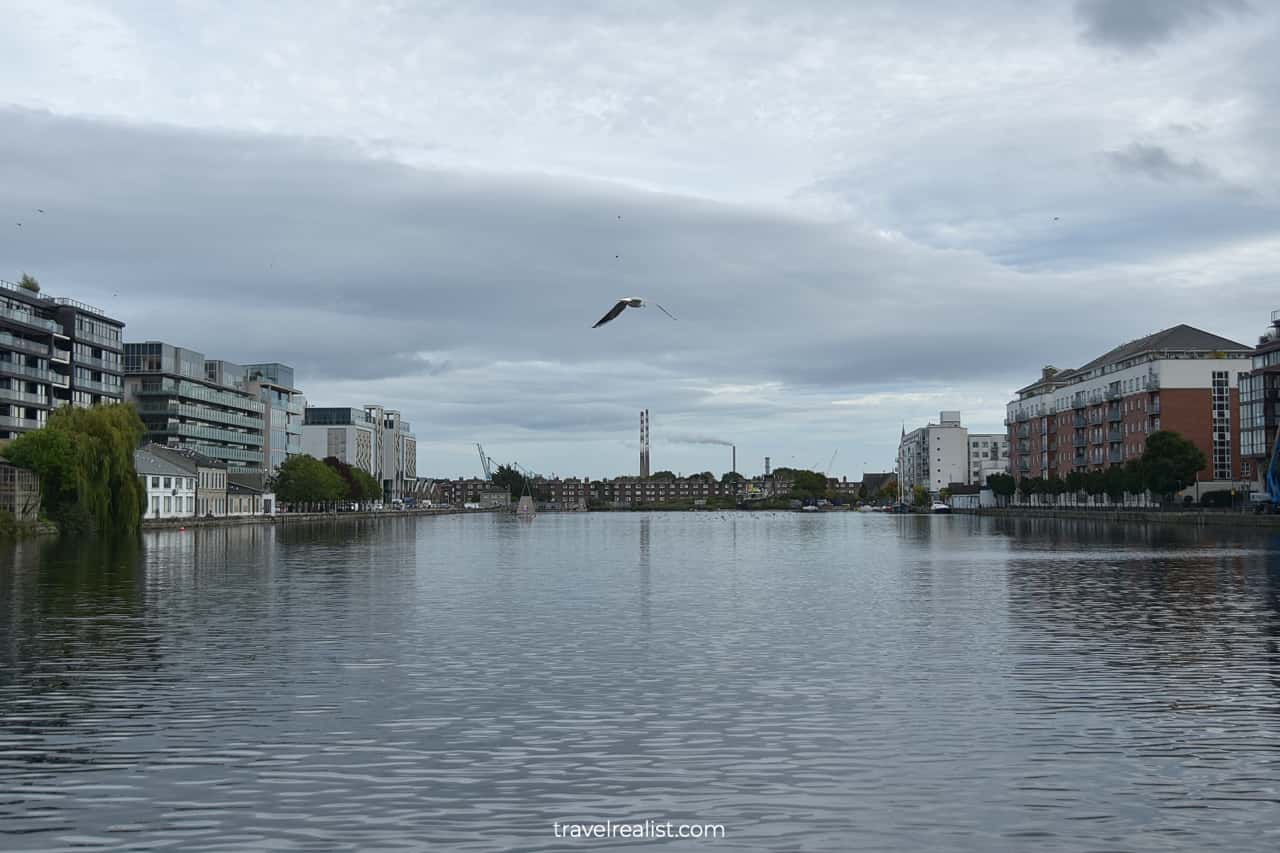
Samuel Beckett Bridge
A harp-like bridge over the River Liffey is a short walk from Grand Canal Dock. The Samuel Beckett Bridge has become a new symbol of the city since it opened in 2009.
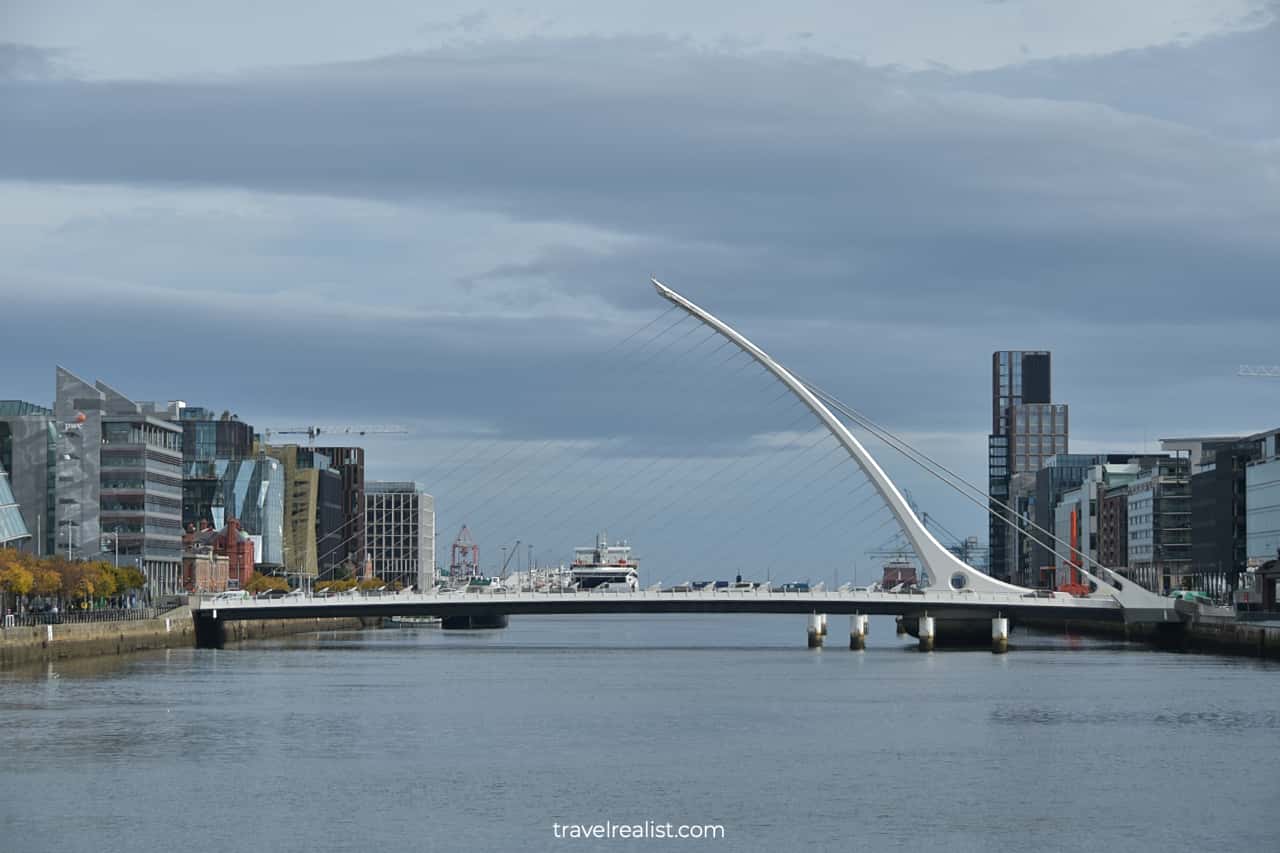
Jeanie Johnston
It is easy to spot a historic-looking ship from the Samuel Beckett Bridge. Jeanie Johnston is at its mooring 0.3 miles (500 m) west off the bridge.
Despite its appearance, Jeanie Johnston is, in fact, a fairly young ship. It was built in 2000 as a replica of the 1847 same named ship.
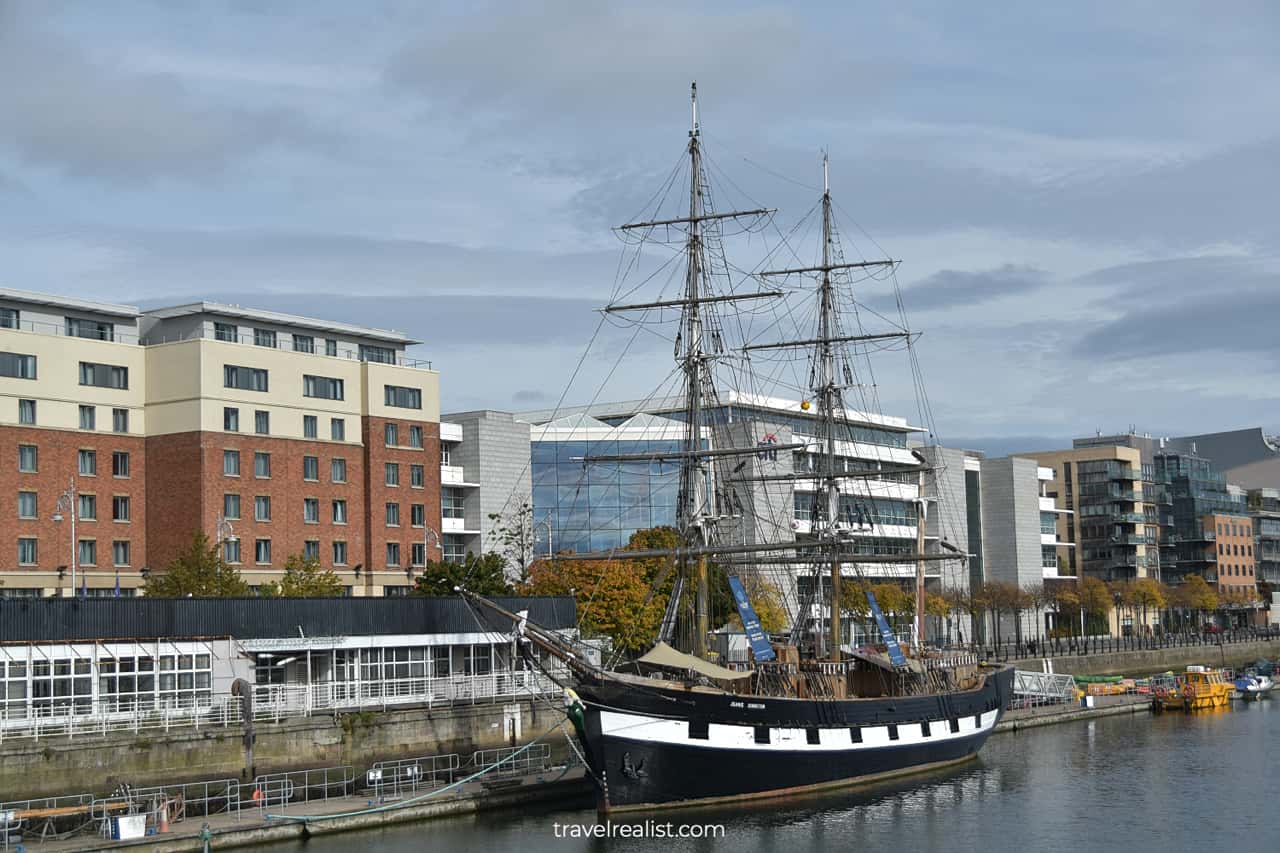
The original three masted barque carried passengers during the Great Famine of the mid 1800s. The ship made 16 trips to North America while maintaining a perfect record with no crew or passenger lost. You can tour the replica ship and learn more about the Great Famine.
Custom House
We continued along the River Liffey for another 5 minutes and arrived at the Custom House. This prominent building has been standing on the river bank since 1791. It served multiple government agencies over the years. You can see the building’s interior on guided and self guided tours.
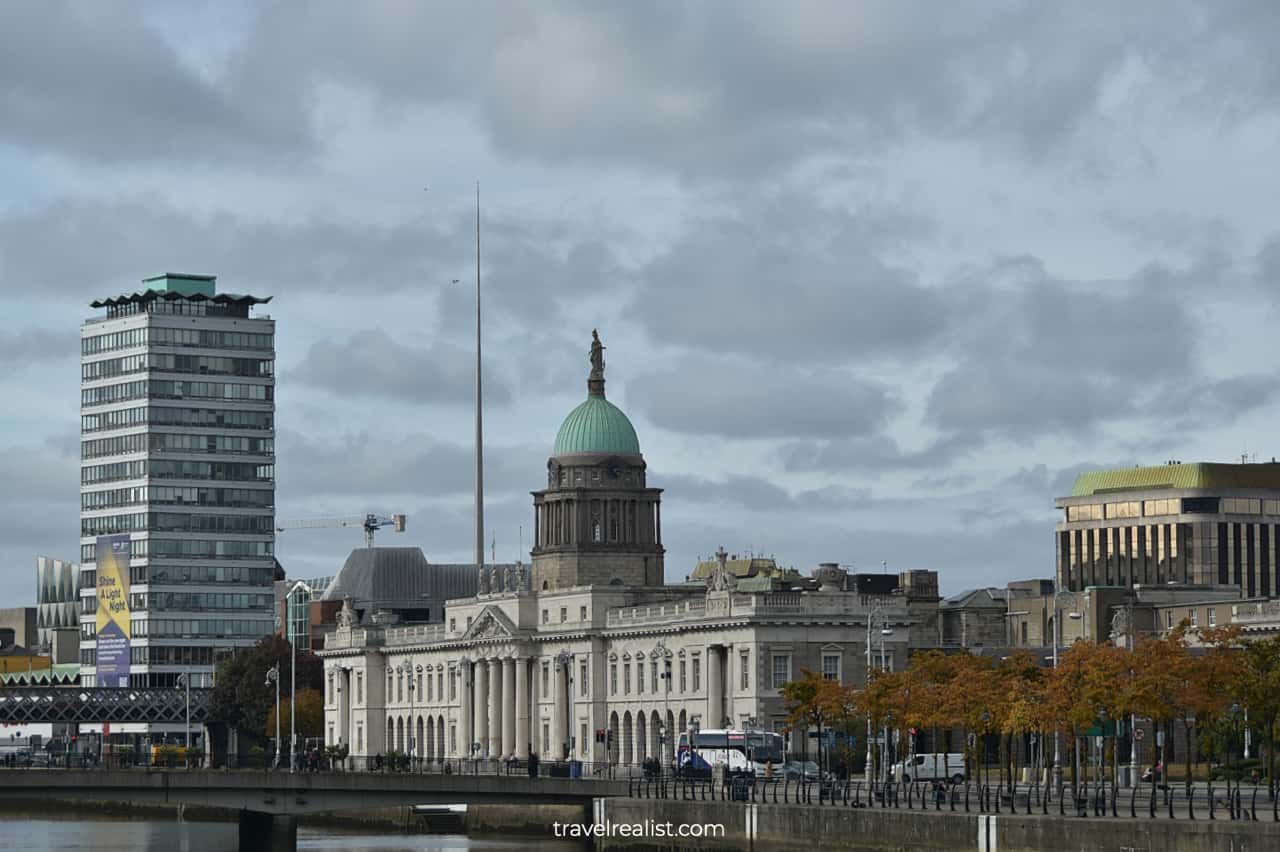
The building played a role in the Irish War of Independence. Back in 1921 the fire destroyed the central dome.
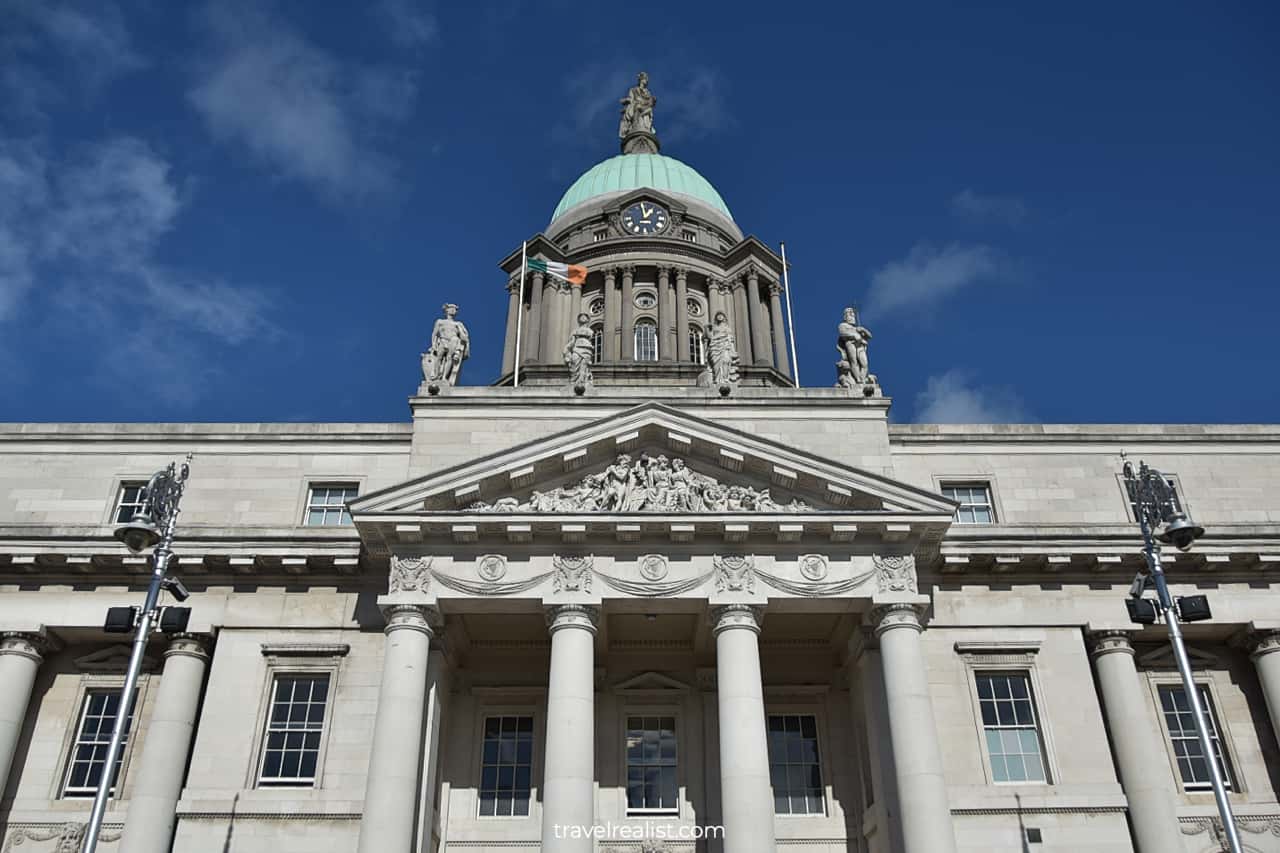
You could still see some of the effects over hundred years later. The restored dome features a darker colored stone than the rest of the building.
Book of Kells
The Custom House is right next to the city center. It was a good time for us to walk south to the Trinity College Dublin.
You can wander and explore the campus at your own pace. But you’d want to do some advance planning to visit the Book of Kells and the Old Library.

It is one of the major places of interest in Dublin and often sells out. The Book of Kells refers to the 9th century religious book. You need to buy tickets to see the Book of Kells in the Trinity College Library.
The chamber that houses the Book of Kells is tiny and off limits for photos and videos. But you are free to take pictures in other chambers.
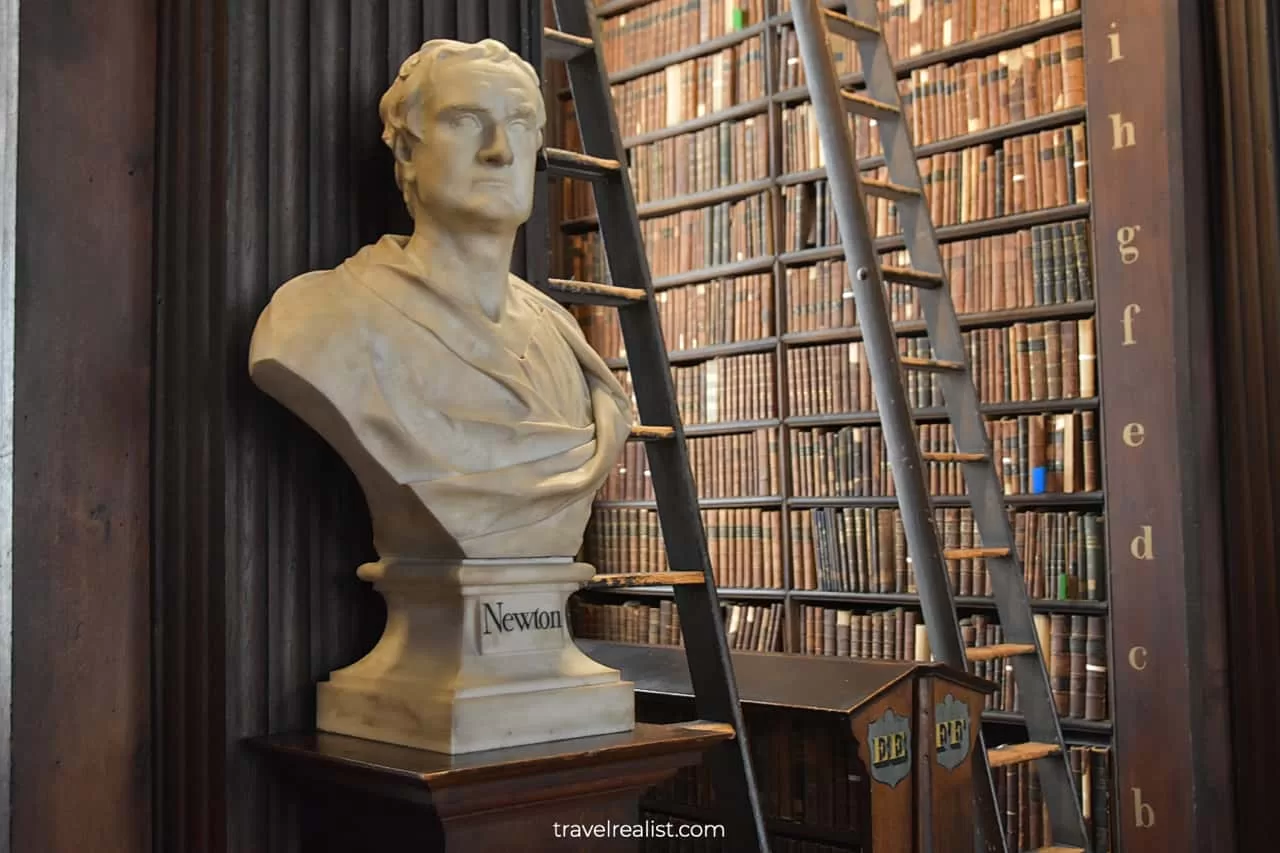
Without any doubt, the Old Library is picture-worthy. Still, we found the €18.5 per person admission price to be too high for the experience.
Dublin Castle
Literature lovers could make a short detour from the Trinity College and explore the Oscar Wilde House. We decided to continue west via the College Green to the Dublin Castle.
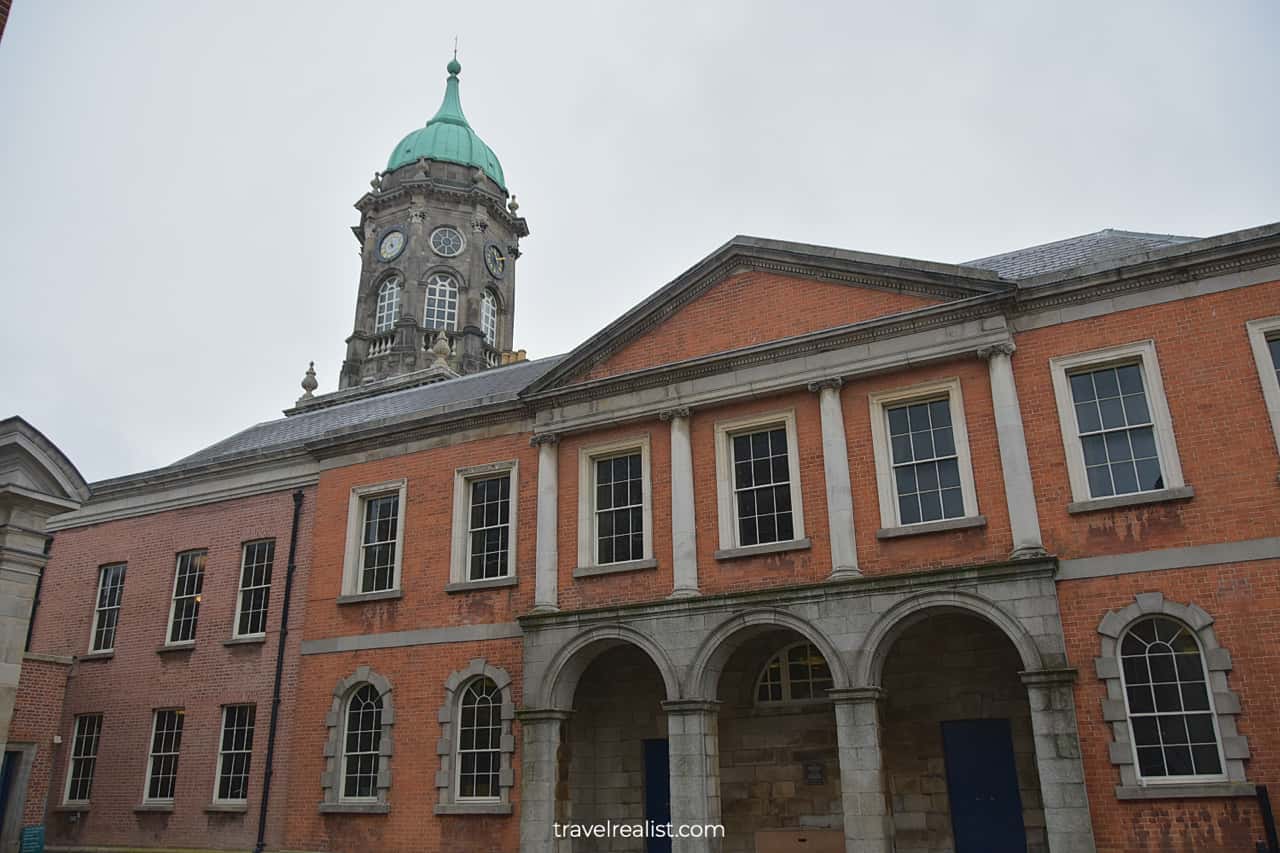
The Dublin Castle dates back to 1204. As a result, it is one of the oldest buildings in the city. When exploring the castle from the outside, make sure to check out the Castle Hall, Chapel Royal, and Record Tower.
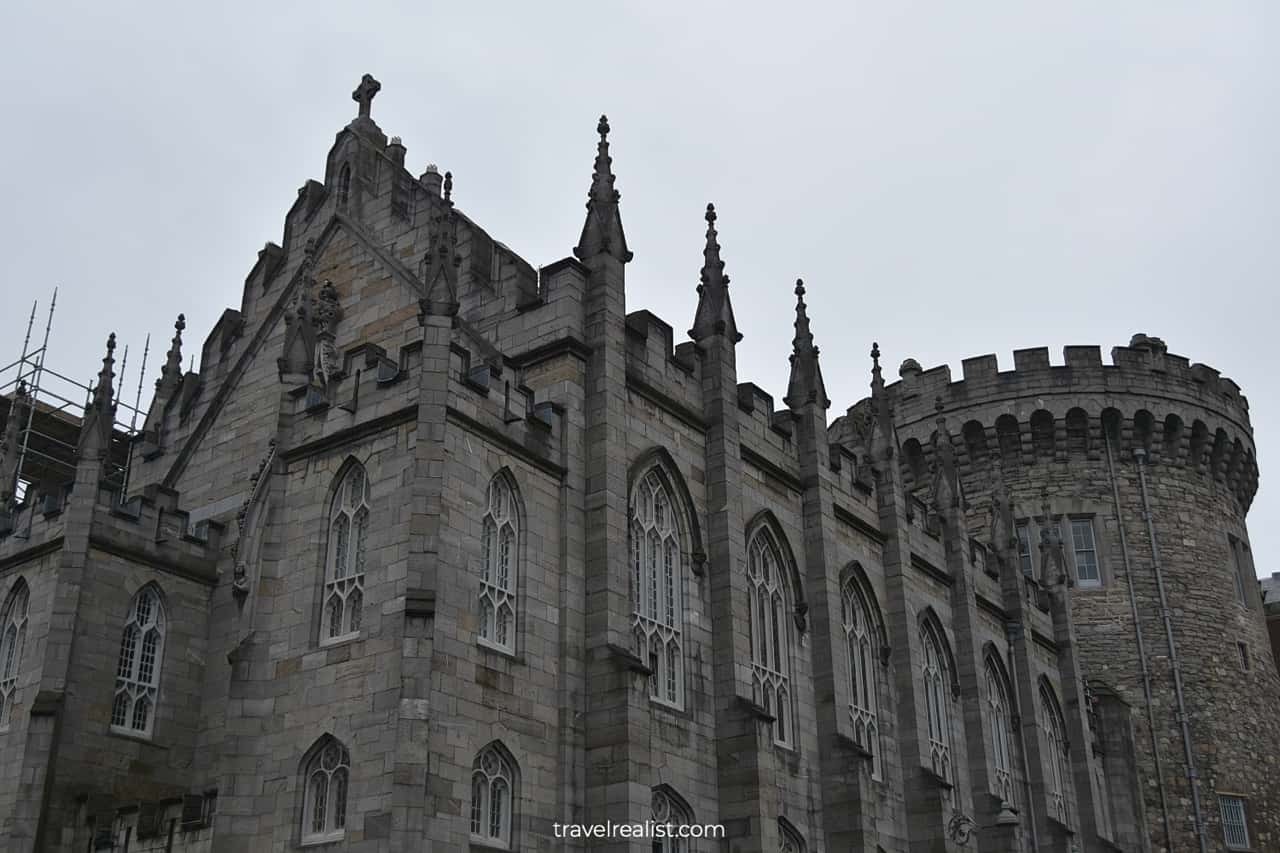
We found the ceiling features a highlight inside the castle.
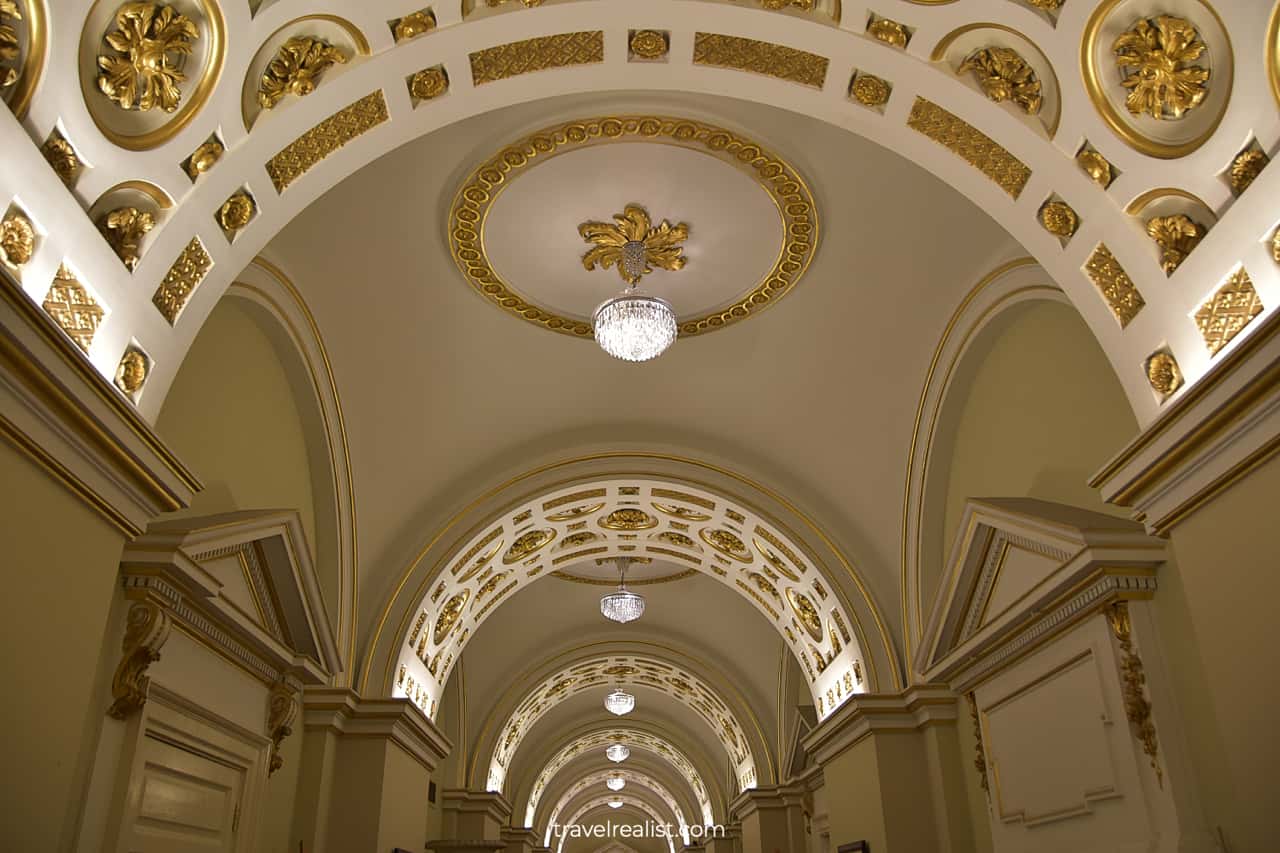
Take at look at this ceiling painting with the coats of arms on the walls.
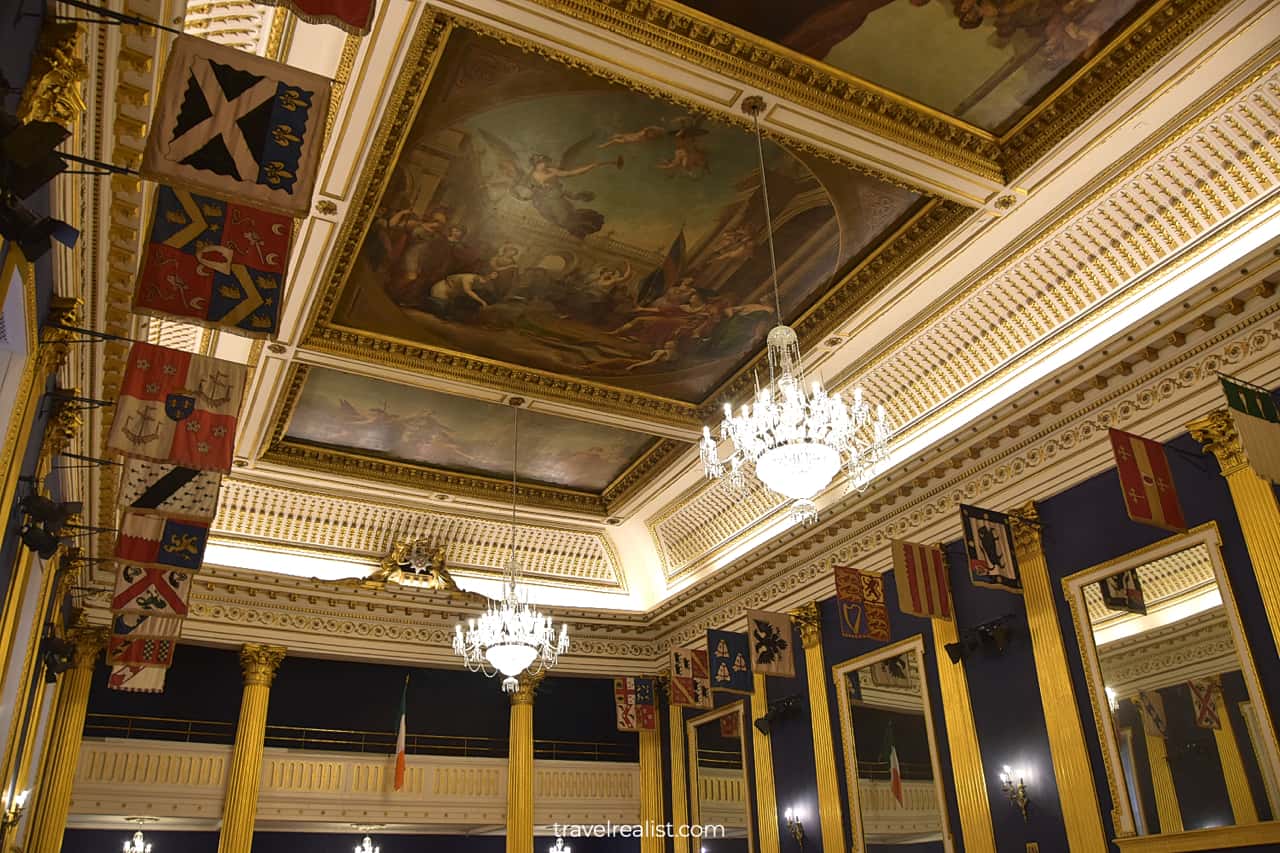
History lovers would find historic furniture sets, paintings, and artifacts in the castle.
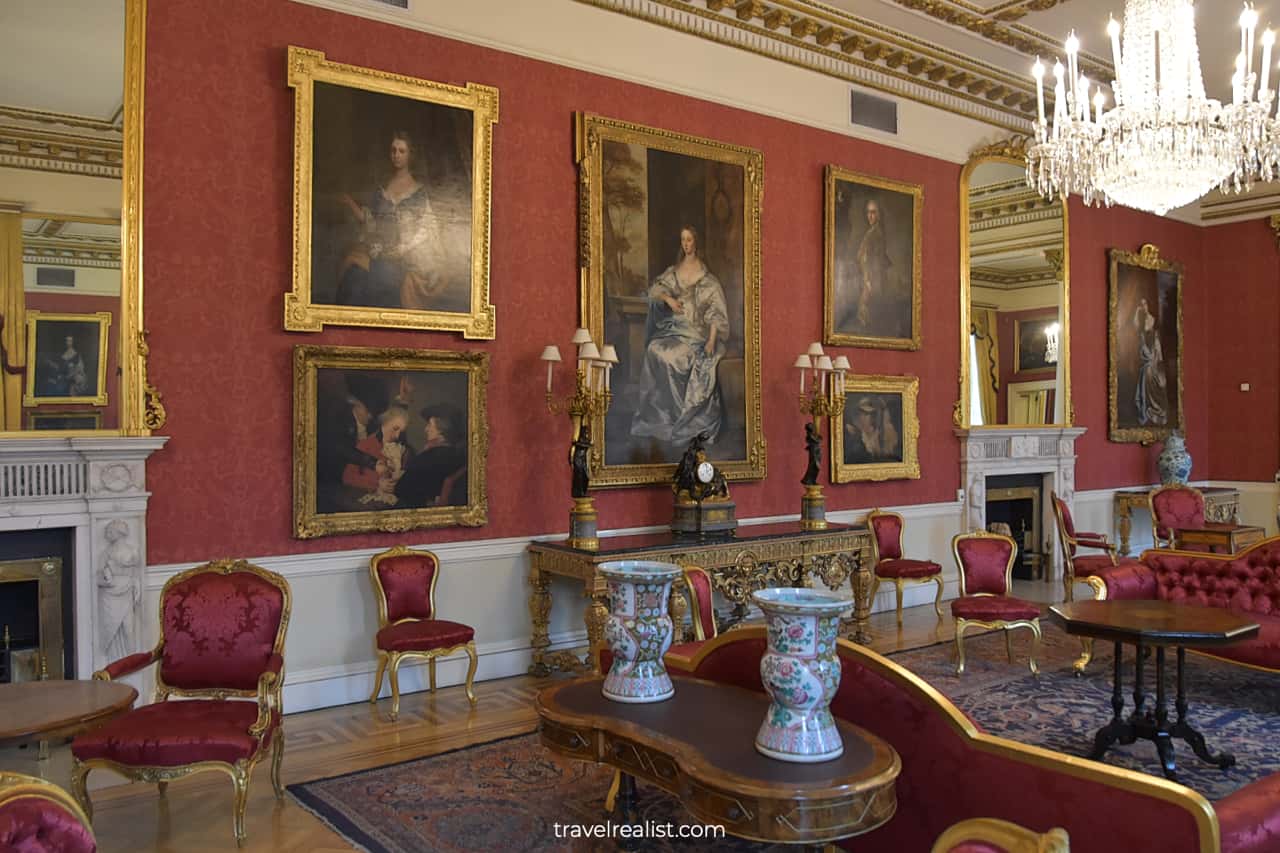
Once we finished the tour, we took a stroll in the Dubh Linn Gardens. Modern buildings approach the castle from nearly all sides.
We found it impossible to get a view of the Coach House Gallery without them protruding in the background.
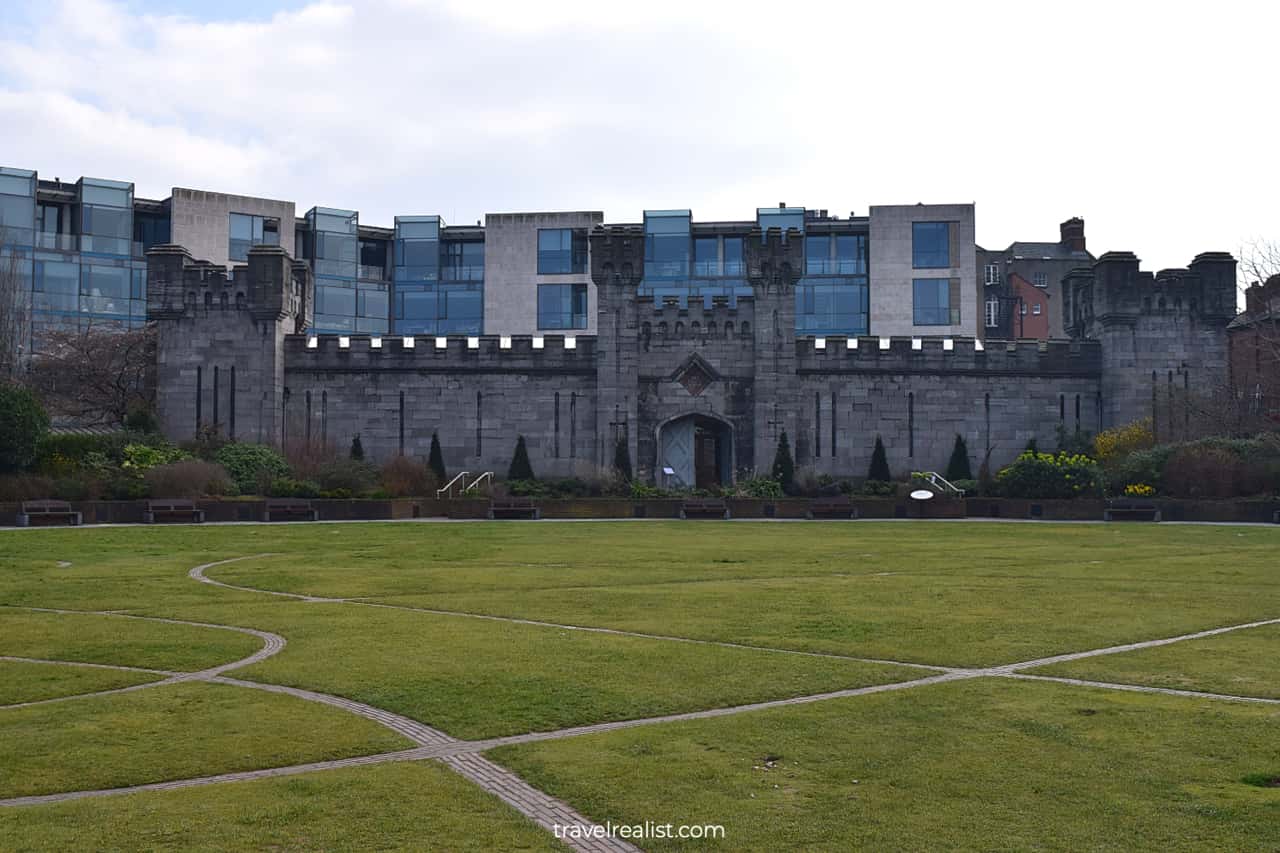
The Dublin Castle location offers multiple options for further city exploration.
- Walk southeast to St. Stephen’s Green, a large central park.
- Walk via the Temple Bar district towards Ha’penny Bridge and Jameson Distillery.
- Proceed west to St. Patrick’s Cathedral and Kilmainham Gaol prison. Spirits lovers would also find this route enjoyable thanks to the nearby Teeling Whiskey Distillery and Guinness Storehouse.
St. Patrick’s Cathedral
We chose a combination of all three options but finished the exploration over two days. This made St. Patrick’s Cathedral our next stop.
This church dates back to 1220 and is short walk south from the Dublin Castle.
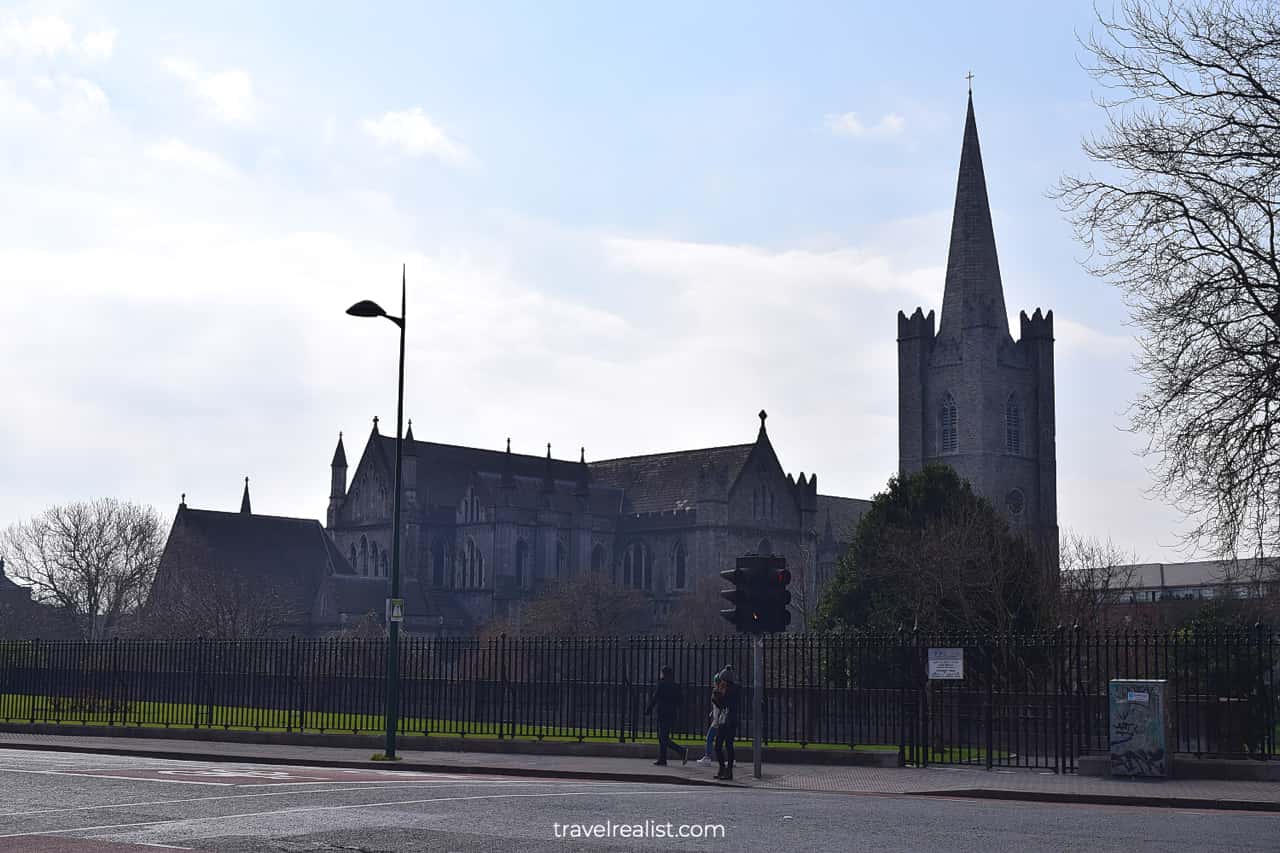
Ha’penny Bridge
After the cathedral we proceeded to the Ha’penny Bridge. This pedestrian bridge is the first bridge over the River Liffey.
Before the bridge opened in 1816, people used ferries to cross the river. And, as the name suggests, you used to pay a halfpenny toll to cross the Ha’Penny Bridge.
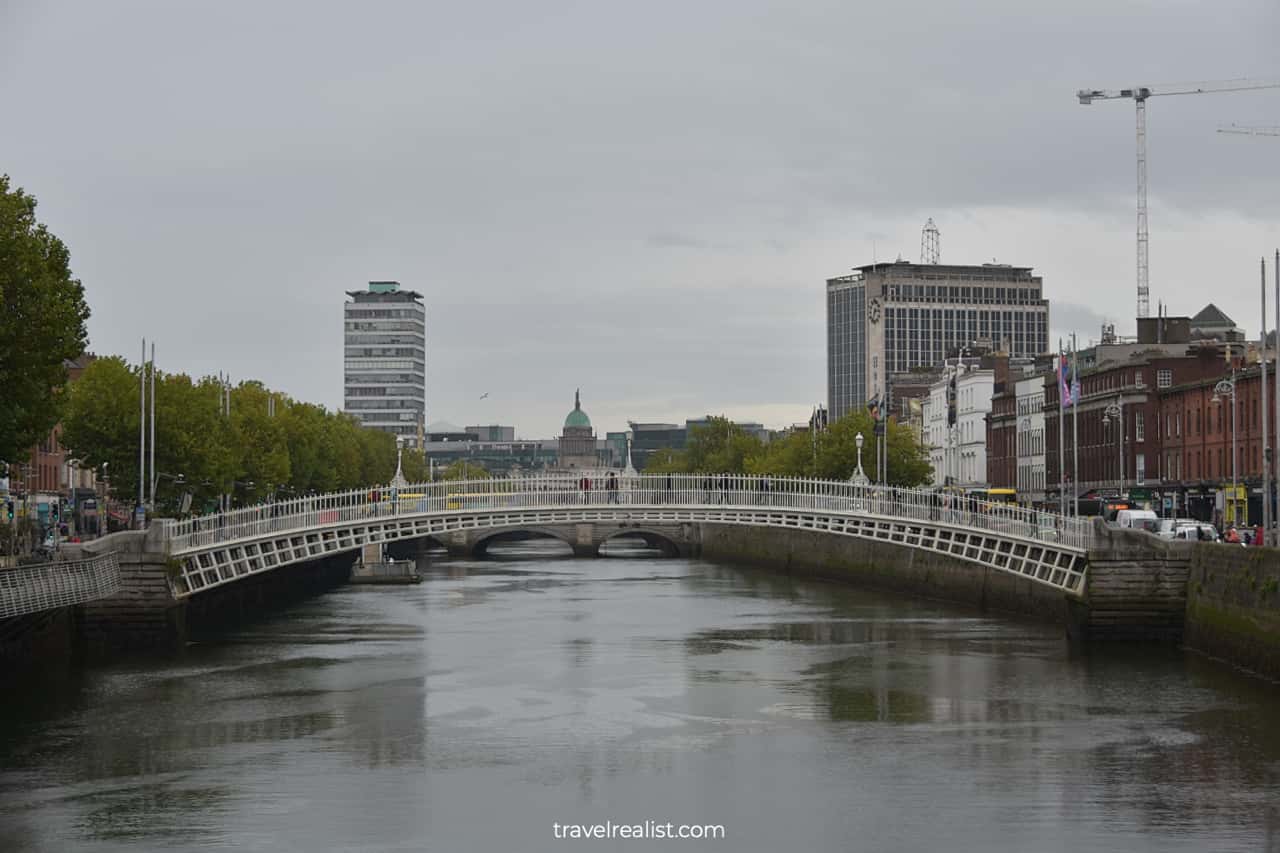
Continue with our Dublin, Ireland Guide to learn more about ways to get to the sights, entrance requirements, and places to stay.
Getting to Dublin
Most visitors to Dublin arrive at Dublin Airport. The city has rapid transit network that consists of light rail (DART), tram (Luas), and commuter rail. Unfortunately, none of these options connect the airport with the city. You would have to take a cab, a bus, or rent a car. Fares are accurate at the time of writing.
- Bus: Aircoach 700, 702, 703, or local buses. Fares for the Aircoach bus depend on the route and stop but start at €7 for single trip (€10 return).
- Cab/Taxi: Both local and global (Uber) ridesharing apps operate in Dublin. But, unlike in the US, all drivers have to have a taxi license. A typical ride would be about €30.
- Car Rental: A valid option if you plan on exploring the sights in the Irish countryside. Most cars have manual transmission. For a Dublin only trip, a car would not be worth it due to the parking scarcity and cost.
The fastest way from the Dublin airport to the city is through the M50 toll tunnel. Depending on the time of the day, it could save you up to an hour in traffic. However, this convenience comes at a premium. While the usual toll is ~€3, the peak time toll is €10.
Once in the city look into Dublinbikes. The 1-day ticket costs €3.5. If you can finish each ride within 30 minutes you would not pay any extra fees.
Where to Stay
Like most European capitals, Dublin has a lot of hotels in or around the city center. You can easily find one within your budget and other requirements.
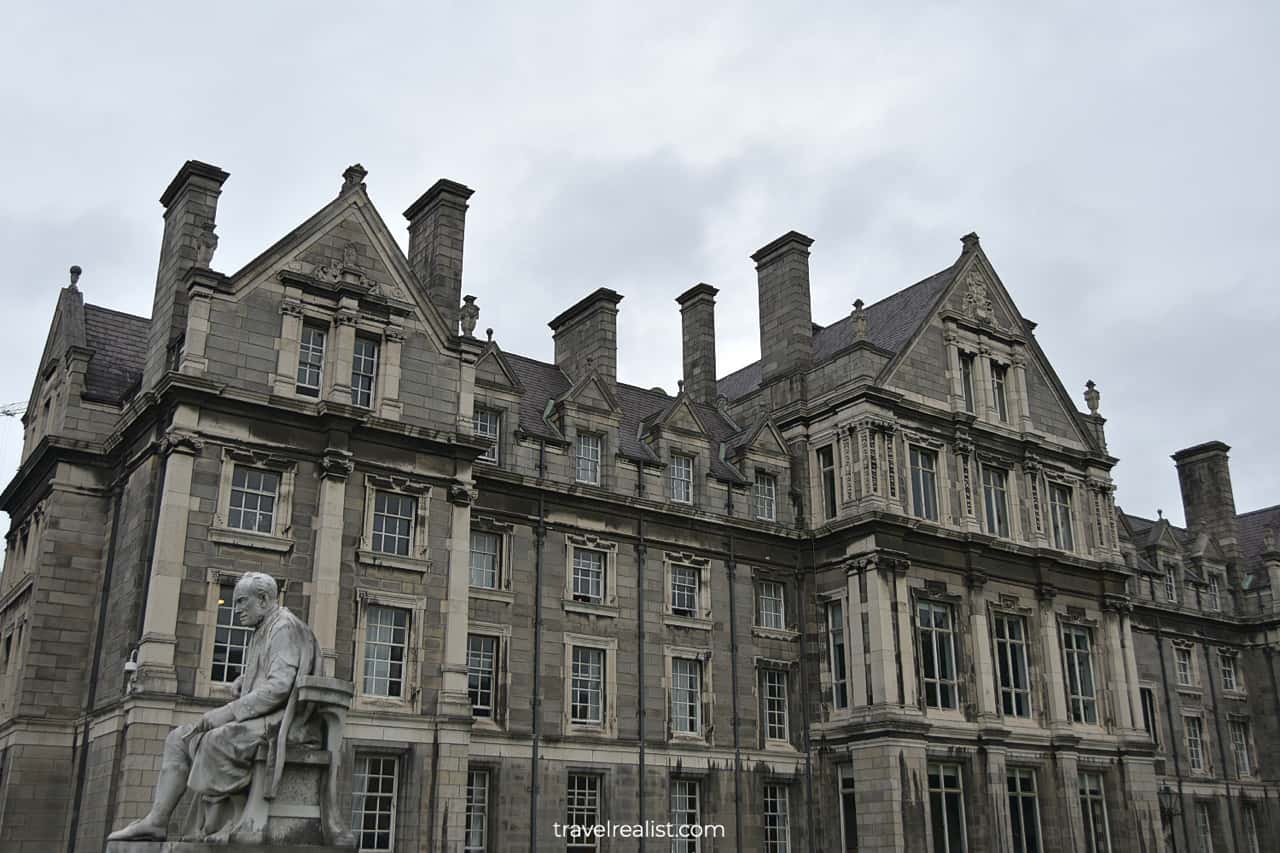
We found the best rates at Dublin Docklands, Ringsend, and Ballsbridge neighborhoods. But your mileage may vary.
Entrance Requirements & Passes
Most sights described in our Dublin, Ireland guide are free of charge and open every day. We summarized information for the admission prices and opening times for the sights that charge admission. Tour prices are accurate as of the time of writing.
- Jeanie Johnston: An Irish Famine Story: open from 10am to 3pm with tours on the hour. Adult admission is €13.
- Custom House: open from 10am to 4:45pm for guided (€8) and self guided (€6) tours.
- The Book of Kells: open from 9:30am to 5pm with reduced Sunday hours. A self guided tour costs €18.5 per adult. Tours routinely sell out, book in advance to guarantee a spot. Consider downloading a free app (iOS, Android) to guide your exploration.
- Oscar Wilde House: open on Saturdays from 2pm to 3:30pm for a guided tour. The tour costs €18 per adult.
- Dublin Castle: open from 9:45am to 5:15pm. Self guided tours cost €8 per adult.
It’s best to leave your large bags and suitcases in the hotel. With the exception of the Dublin Castle, other tour based attractions do not offer lockers or luggage storage services.
Takeaways: Dublin
Dublin is a great tourist destination during spring and summer months. Exploration will get even better if you are lucky to get a couple of sunny days. There is a lot of history in this medieval city.
From castles and cathedrals to university buildings and bridges. It is best to explore Dublin on foot or on a bike. This way, you could enjoy the historic streets at your own pace and avoid traffic.
Take a look at our Dublin, Ireland Video Guide and visit our YouTube channel for the latest videos.
Frequently Asked Questions
Dublin is a city of pubs, architecture, and literature. Visitors can enjoy both Georgian and modern buildings while wandering the city streets. Dublin is also home to Guinness Brewery and Jameson Distillery making it a must visit for spirits lovers.
Dublin, Ireland is an expensive city for tourists. Accommodation, transportation, and meal prices are among the highest in Europe.
Dublin is a pedestrian and cyclist friendly city. It is easy to walk from one sight to another in the city center.
Guinness Storehouse, Book of Kells, and Kilmainham Gaol are the top attractions in Dublin, Ireland.
Late spring and summer are the best time to visit Dublin. The weather is pleasant and rain is less frequent.
Dublin Castle is one of the oldest buildings in the city. You should visit the castle if this is your only chance to see a castle in Ireland. However, this castle pales in comparison to other castles in more remote Irish locations.
You can tour the Dublin Castle from 9:45am to 5:15pm on guided and self guided tours.
Safe realist travels!

